Secretary of State for India
Former position in British government From Wikipedia, the free encyclopedia
His (or Her) Majesty's Principal Secretary of State for India, known for short as the India secretary or the Indian secretary, was the British Cabinet minister and the political head of the India Office responsible for the governance of the British Indian Empire, including Aden, Burma and the Persian Gulf Residency. The post was created in 1858 when the East India Company's rule in Bengal ended and India, except for the Princely States, was brought under the direct administration of the government in Whitehall in London, beginning the official colonial period under the British Empire.
This article needs additional citations for verification. (January 2023) |
| Secretary of State for India | |
|---|---|
 Royal Arms as used by His Majesty's Government | |
| India Office | |
| Member of | British Cabinet Privy Council |
| Seat | Westminster, London |
| Appointer | The British Monarch on advice of the Prime Minister |
| Term length | At His Majesty's pleasure |
| Constituting instrument | Government of India Act |
| Precursor | President of the Board of Control |
| Formation | 2 August 1858 |
| First holder | Lord Stanley |
| Final holder | William Hare, 5th Earl of Listowel |
| Abolished | 14 August 1947 |
| Deputy | Under-Secretary of State for India |

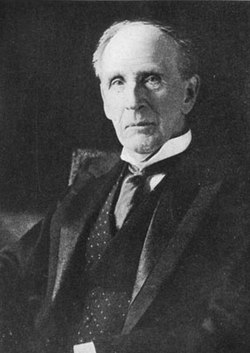
In 1937, the India Office was reorganised which separated Burma and Aden under a new Burma Office, but the same secretary of state headed both departments and a new title was established as His Majesty's Principal Secretary of State for India and Burma. The India Office and its secretary of state were abolished in August 1947, when the United Kingdom granted independence in the Indian Independence Act, which created two new independent dominions, India and Pakistan. Burma soon achieved independence separately in early 1948.
Secretaries of state for India, 1858–1937
Summarize
Perspective
| Portrait | Name | Term of office | Political party | Prime Minister | |||
|---|---|---|---|---|---|---|---|
 |
Lord Stanley MP for King's Lynn |
2 August 1858 |
11 June 1859 |
Conservative | Edward Smith-Stanley, 14th Earl of Derby | ||
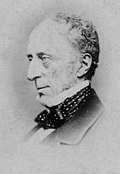 |
Sir Charles Wood MP for Halifax until 1865 MP for Ripon after 1865 |
18 June 1859 |
16 February 1866[1] |
Liberal | Henry John Temple, 3rd Viscount Palmerston | ||
| John Russell, 1st Earl Russell | |||||||
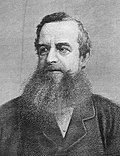 |
George Robinson, 3rd Earl de Grey | 16 February 1866 |
26 June 1866 |
Liberal | |||
 |
Robert Gascoyne-Cecil, Viscount Cranborne MP for Stamford |
6 July 1866 |
8 March 1867 |
Conservative | Edward Smith-Stanley, 14th Earl of Derby | ||
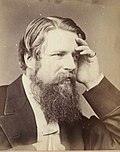 |
Sir Stafford Northcote MP for North Devonshire |
8 March 1867 |
1 December 1868 |
Conservative | |||
| Benjamin Disraeli | |||||||
 |
George Campbell, 8th Duke of Argyll | 9 December 1868 |
17 February 1874 |
Liberal | William Ewart Gladstone | ||
 |
Robert Gascoyne-Cecil, 3rd Marquess of Salisbury | 21 February 1874 |
2 April 1878 |
Conservative | Benjamin Disraeli | ||
 |
Gathorne Gathorne-Hardy, 1st Viscount Cranbrook |
2 April 1878 |
21 April 1880 |
Conservative | |||
 |
Spencer Cavendish, Marquess of Hartington MP for North East Lancashire |
28 April 1880 |
16 December 1882 |
[[Liberal | William Ewart Gladstone | ||
 |
John Wodehouse, 1st Earl of Kimberley | 16 December 1882 |
9 June 1885 |
Liberal | |||
 |
Lord Randolph Churchill MP for Paddington South |
24 June 1885 |
28 January 1886 |
Conservative | Robert Gascoyne-Cecil, 3rd Marquess of Salisbury | ||
 |
John Wodehouse, 1st Earl of Kimberley | 6 February 1886 |
20 July 1886 |
Liberal | William Ewart Gladstone | ||
 |
R. A. Cross, 1st Viscount Cross | 3 August 1886 |
11 August 1892 |
Conservative | Robert Gascoyne-Cecil, 3rd Marquess of Salisbury | ||
 |
John Wodehouse, 1st Earl of Kimberley | 18 August 1892 |
10 March 1894 |
Liberal | William Ewart Gladstone | ||
 |
Henry Fowler MP for Wolverhampton East |
10 March 1894 |
21 June 1895 |
Liberal | Archibald Primrose, 5th Earl of Rosebery | ||
 |
Lord George Hamilton MP for Ealing |
4 July 1895 |
9 October 1903[2] |
Conservative | Robert Gascoyne-Cecil, 3rd Marquess of Salisbury (Unionist Coalition) | ||
| Arthur Balfour (Unionist Coalition) | |||||||
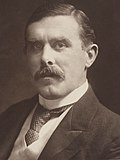 |
William St John Brodrick MP for Guildford |
9 October 1903 |
4 December 1905 |
Irish Unionist | |||
 |
John Morley MP for Montrose Burghs until 1908 Viscount Morley of Blackburn after 1908 |
10 December 1905 |
3 November 1910 |
Liberal | Sir Henry Campbell-Bannerman | ||
| H. H. Asquith | |||||||
 |
Robert Crewe-Milnes, 1st Earl of Crewe | 3 November 1910 |
7 March 1911 |
Liberal | |||
 |
John Morley, 1st Viscount Morley of Blackburn | 7 March 1911 |
25 May 1911 |
Liberal | |||
 |
Robert Crewe-Milnes, 1st Marquess of Crewe | 25 May 1911 |
25 May 1915 |
Liberal | |||
 |
Austen Chamberlain MP for Birmingham West |
25 May 1915 |
17 July 1917[3] |
Conservative | H. H. Asquith (Coalition) | ||
 |
Edwin Montagu MP for Chesterton until 1918 MP for Cambridgeshire after 1918 |
17 July 1917 |
19 March 1922 |
Liberal | |||
 |
William Peel, 2nd Viscount Peel | 19 March 1922 |
22 January 1924 |
Conservative | Bonar Law | ||
| Stanley Baldwin | |||||||
 |
Sydney Olivier, 1st Baron Olivier | 22 January 1924 |
3 November 1924 |
Labour | Ramsay MacDonald | ||
 |
F. E. Smith, 1st Earl of Birkenhead | 6 November 1924 |
18 October 1928 |
Conservative | Stanley Baldwin | ||
 |
William Peel, 2nd Viscount Peel | 18 October 1928 |
4 June 1929 |
Conservative | |||
 |
William Wedgwood Benn MP for Aberdeen North |
7 June 1929 |
24 August 1931 |
Labour | Ramsay MacDonald | ||
 |
Sir Samuel Hoare MP for Chelsea |
25 August 1931 |
7 June 1935 |
Conservative | Ramsay MacDonald (1st & 2nd National Min.) | ||
 |
Lawrence Dundas, 2nd Marquess of Zetland | 7 June 1935 |
28 May 1937 |
Conservative | Stanley Baldwin (3rd National Min.) | ||
Secretaries of state for India and Burma, 1937–1947
| Portrait | Name | Term of office | Political party | Prime Minister | |||
|---|---|---|---|---|---|---|---|
 |
Lawrence Dundas, 2nd Marquess of Zetland | 28 May 1937 |
13 May 1940 |
Conservative | Neville Chamberlain (4th National Min.; War Coalition) | ||
 |
Leo Amery MP for Birmingham Sparkbrook |
13 May 1940 |
26 July 1945 |
Conservative | Winston Churchill (War Coalition; Caretaker Min.) | ||
 |
Frederick Pethick-Lawrence, 1st Baron Pethick-Lawrence | 3 August 1945 |
17 April 1947 |
Labour | Clement Attlee | ||
| The Right Honourable William Hare, 5th Earl of Listowel |
17 April 1947 |
14 August 1947 |
Labour | ||||
Secretaries of state for Burma, 1947–1948
| Portrait | Name | Term of office | Political party | Prime Minister | |||
|---|---|---|---|---|---|---|---|
| The Right Honourable William Hare, 5th Earl of Listowel |
14 August 1947 |
4 January 1948 |
Labour | Clement Attlee | |||
See also
Summarize
Perspective
- India Office
- British Raj
- British rule in Burma
- Governor-General of India
- Imperial Civil Service
- Government of India Act
Notes
Further reading
External links
Wikiwand - on
Seamless Wikipedia browsing. On steroids.
